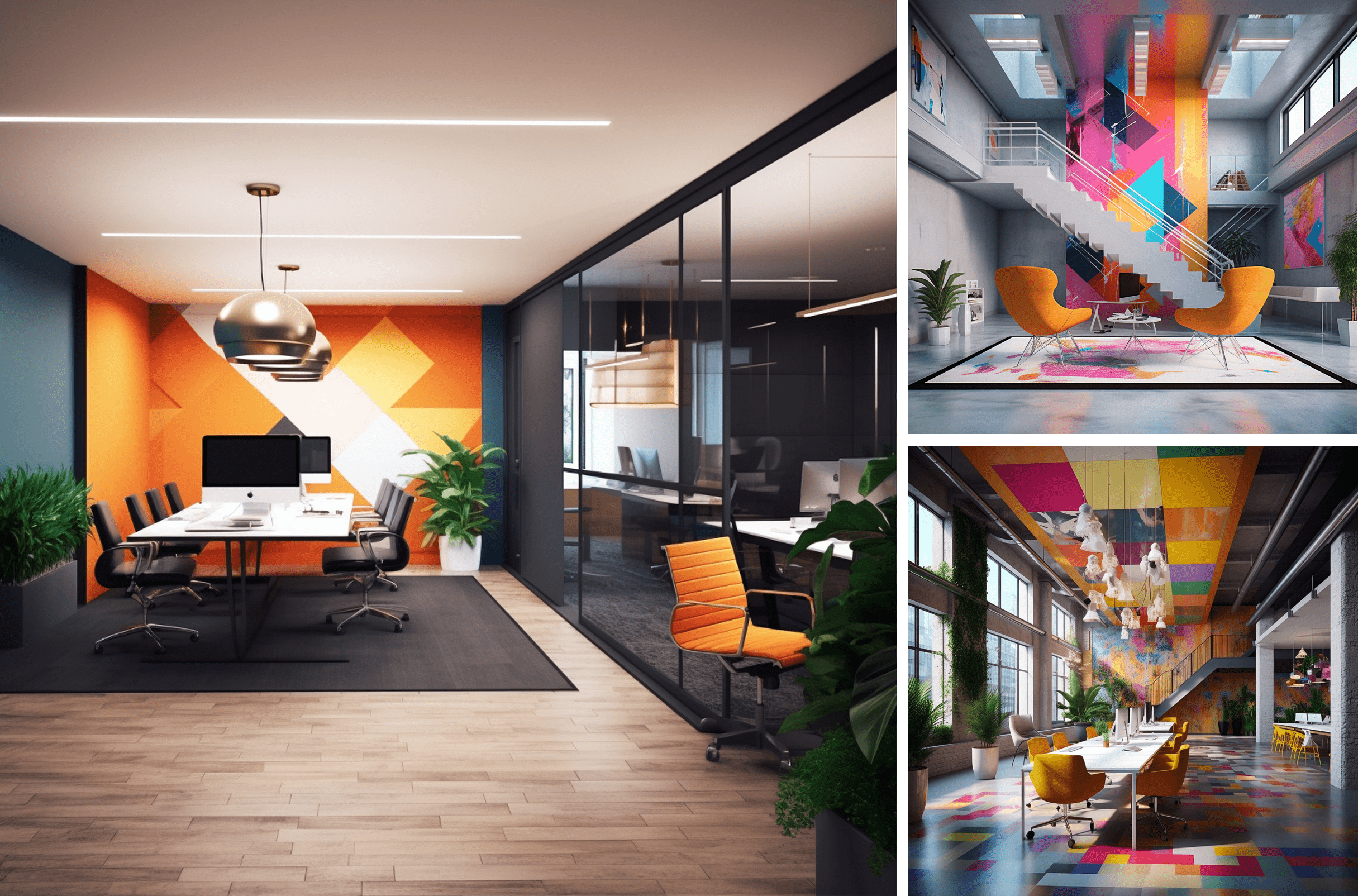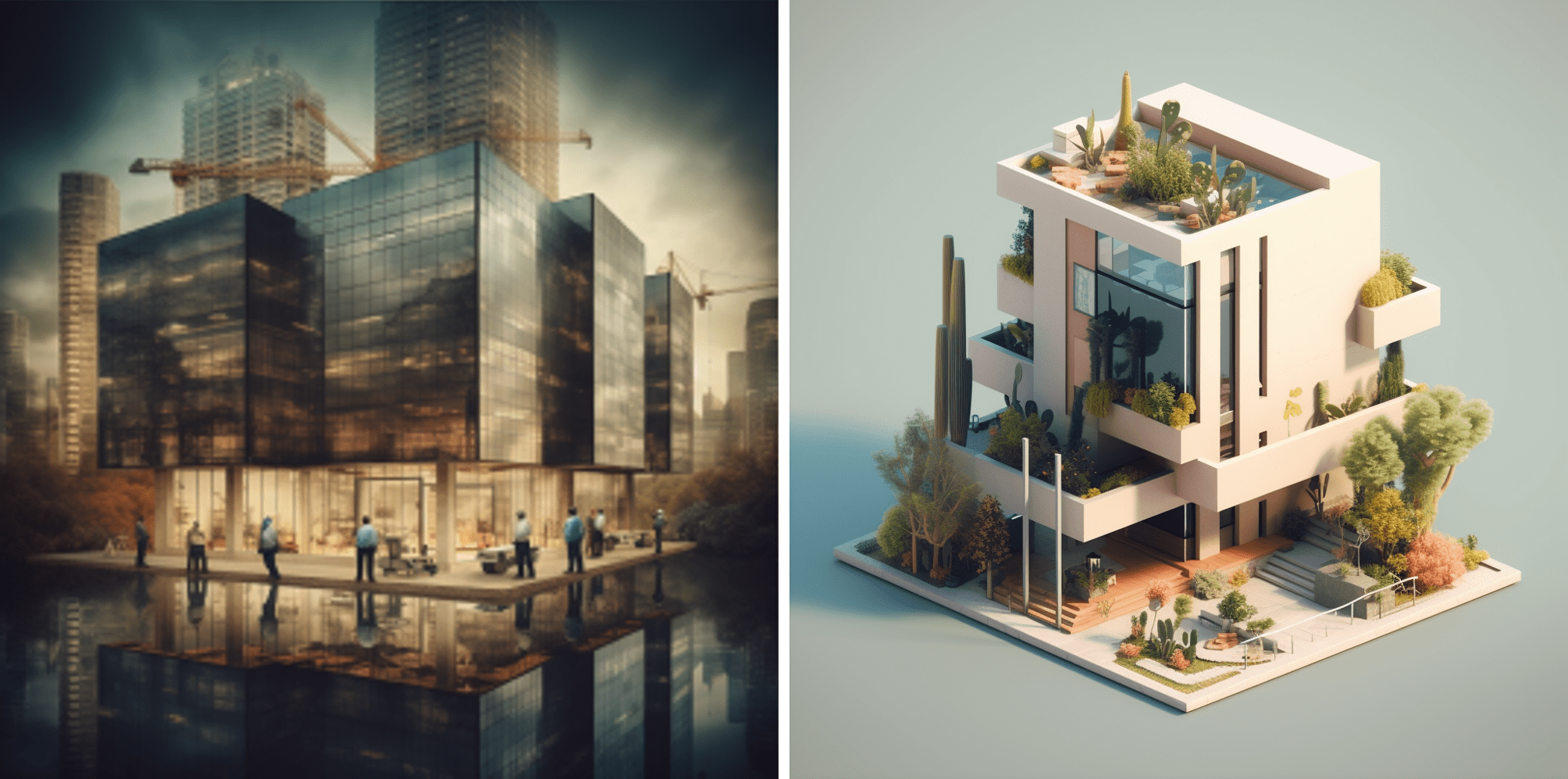The role of Artificial Intelligence within the architecture & design industry
The architecture & design industry is constantly evolving with new trends and technologies that keep emerging and spreading.
One of the most recent and talked-about technology which is establishing across various industries and has been having a strong influence also within the design field is, of course, artificial intelligence (also known as AI).
But what is exactly artificial intelligence? AI is a technology designed to teach computers all the human cognitive abilities, so that they can think like humans and mimic their actions.
This becomes possible thanks to what is called “machine learning”: algorithms get exposed, over time, to wide amounts of data which they intake and process and which train the algorithm to recognize similar data in the future, improving the machine’s performance.
As a result, machines can perform tasks that usually require human intelligence and human creativity such as visual perception, speech recognition, decision-making, and language translation.
Artificial Intelligence applied to Architecture & Design
Throughout the most recent years, there has been a significant increase in the use of AI technology within the design processes, not as a replacement of human designers but more as a support in terms of enhancing their abilities, empowering them to create unique and personalised designs.
Right because of that, AI allows designers to automate repetitive tasks and smooth the design process, reducing the workflow and improving their productivity. Thanks to AI, in fact, designers can complete their tasks in a faster way, drastically reducing the time needed for the production of contents.
If applied correctly, through a deep analysis of a wide set of customer data, Artificial Intelligence can generate personalised designs and optimise user experiences, enabling designers to make strategic design decisions based on the client’s needs and creating extremely functional designs.
More Insights

Allure presents Henri Bernabé
Allure presents Henri Bernabé Henri is an expert in the French office real estate market, having spent four years as an analyst at Cushman & Wakefield and over two years as a real estate developer for the coworking operator Wojo. He has advised both Landlords...

Allure presents Brigitte Beltran
Allure presents Brigitte Beltran Brigitte Beltran, MCR.w, SLCR is an accomplished leader in the real estate industry, and a global critical thinker thriving on change with a passion for people and places. In her current role as part of the Global team at...

Also, AI applied to design has made it possible to increase the level of complex design problems’ resolution. In fact, the design process involves various and different factors like size, shape, and material that must be considered to meet functional requirements while ensuring customer satisfaction. With the help of artificial intelligence, its advanced analytic skills can examine the design specs and find gaps to improve the overall project. This enables the creation of functional, aesthetic designs that meet the requirements of both end-users and creators.
Some of the most useful ways AI is supporting the architecture & design industry are the following:
Virtual Reality and 3D Visualisation
Through the use of Virtual Reality and 3D visualization, interior designers can create immersive virtual environments that allow clients to visualise the designs in real-time, making it easier to make changes and adjustments as needed. This technology allows designers to create a realistic representation of the design, helping clients to fully understand the proposed changes before making any physical changes.

Machine Learning Algorithms
By using ML algorithms, designers can analyse data about the clients’ preferences (including color palettes, furniture styles and decor choices), using these information to create customised designs that perfectly match the clients’ tastes and preferences. This not only improves the overall customer experience but also helps designers to generate ideas quickly and efficiently and create more unique and creative designs, reducing the time needed and allowing them to focus on more important aspects of the project.

For example, a tool like Adobe’s Sensei can help a designer create variations of the same design with minor changes, saving lots of time and increasing productivity.
Space Planning
On a similar note, AI can also help designers with space planning by analysing data on the dimensions of a room and the placement of furniture (if already existing), machine learning algorithms can suggest the most optimal layouts and arrangements that maximize the use of space and create a more functional and optimal design. This can help designers to create designs that are not only aesthetically pleasing but also practical and functional. For example, Autodesk uses algorithms to analyse data, identify patterns and provide insights that help designers make data-driven decisions.

Cost Estimation
AI can finally be extremely helpful with cost estimation through an accurate analysis of data on the cost of materials, building process, and other expenses related to the specific project, generating an accurate cost estimation. This can help designers to create designs that fit within the clients’ budgets and avoid any unexpected costs or delays during the whole project.

That being said, AI-generated designs will always differ from those created by human designers, as creativity is vital and central in the design process and AI designs are generated through prescribed algorithms, which lack that same creativity and intuition that human designers have. Human designers can leverage their experience and insights to create designs that meet a specific purpose or effect, bringing a sense of purpose and expression to the design.
As a result, AI technology can be considered as an important and very useful assistant for human designers, a support which enhances their strategies to create designs that allow them to get to the best possible final result.
